What if I told you that your favorite home fragrance could be hiding a toxic secret? Beneath the sweet scent that fills your living room could lurk a cocktail of chemicals, silently affecting the health of your loved ones and the environment. First I will share my favorite eco-friendly, non-toxic wax melt alternative: beeswax with essential oils. Then we will get into what makes beeswax the best and the problems with other wax melts. Finally, I’ll share an easy DIY, non-toxic wax melt recipe to keep your home smelling heavenly without compromising safety.
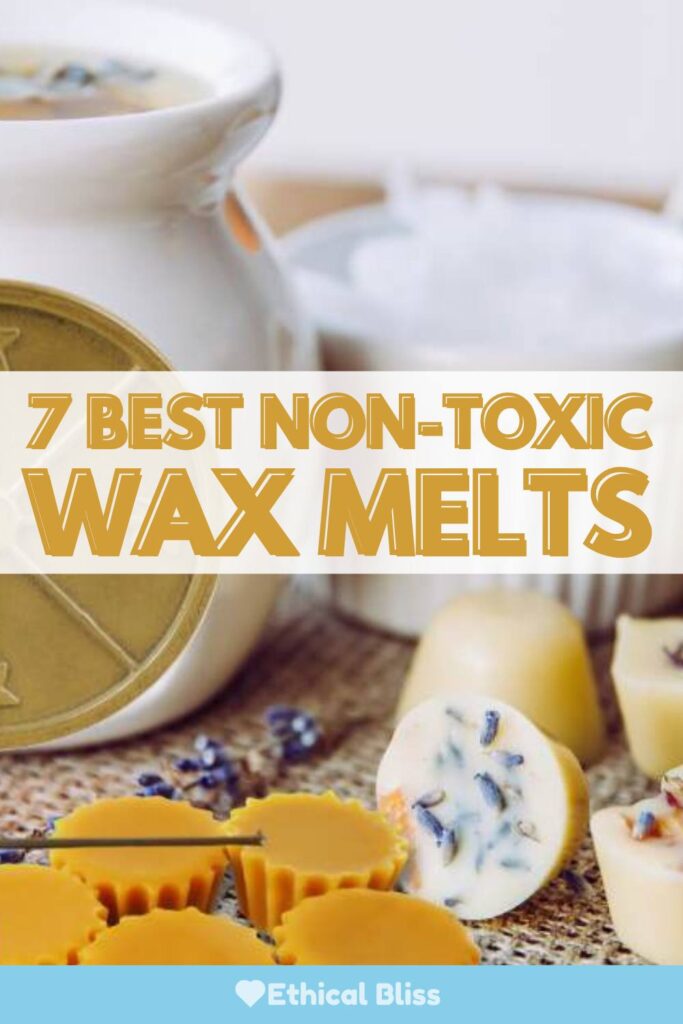
This post may contain affiliate links. If you purchase through them, we might earn a small commission at no additional cost to you. Learn more here.
The Best Non-Toxic Wax Melts
1. Fontana Candle Co.
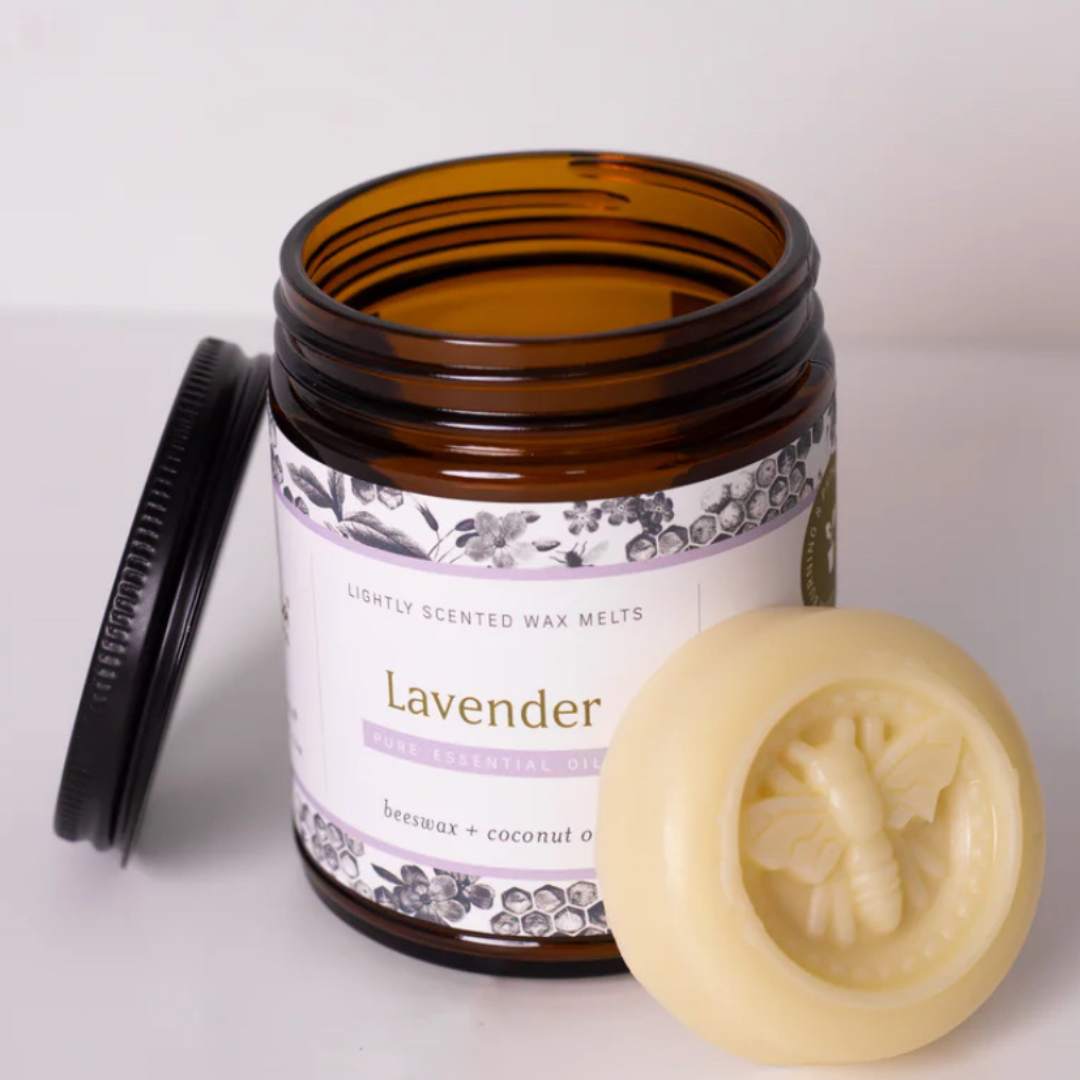
Fontana is a family-run company that aims to provide “safe and transparent” non-toxic candles and wax melts. They use 100% natural ingredients, which are third-party certified by Made Safe.1
Fontana candles and wax melts are made with pure beeswax, pure expeller-pressed coconut oil, and natural essential oils.2
The Made Safe seal assures that a product is free from toxins harmful to humans, animals, and ecosystems, having been rigorously tested for carcinogens, endocrine disruptors, heavy metals, neurotoxins, pesticides, and other hazardous substances.

Help me get started!
Do you want to live a less-toxic, more eco-friendly lifestyle but have no idea where to begin? Here’s our “Non-Toxic 101” guide to get you started today!

2. Natural Sloth
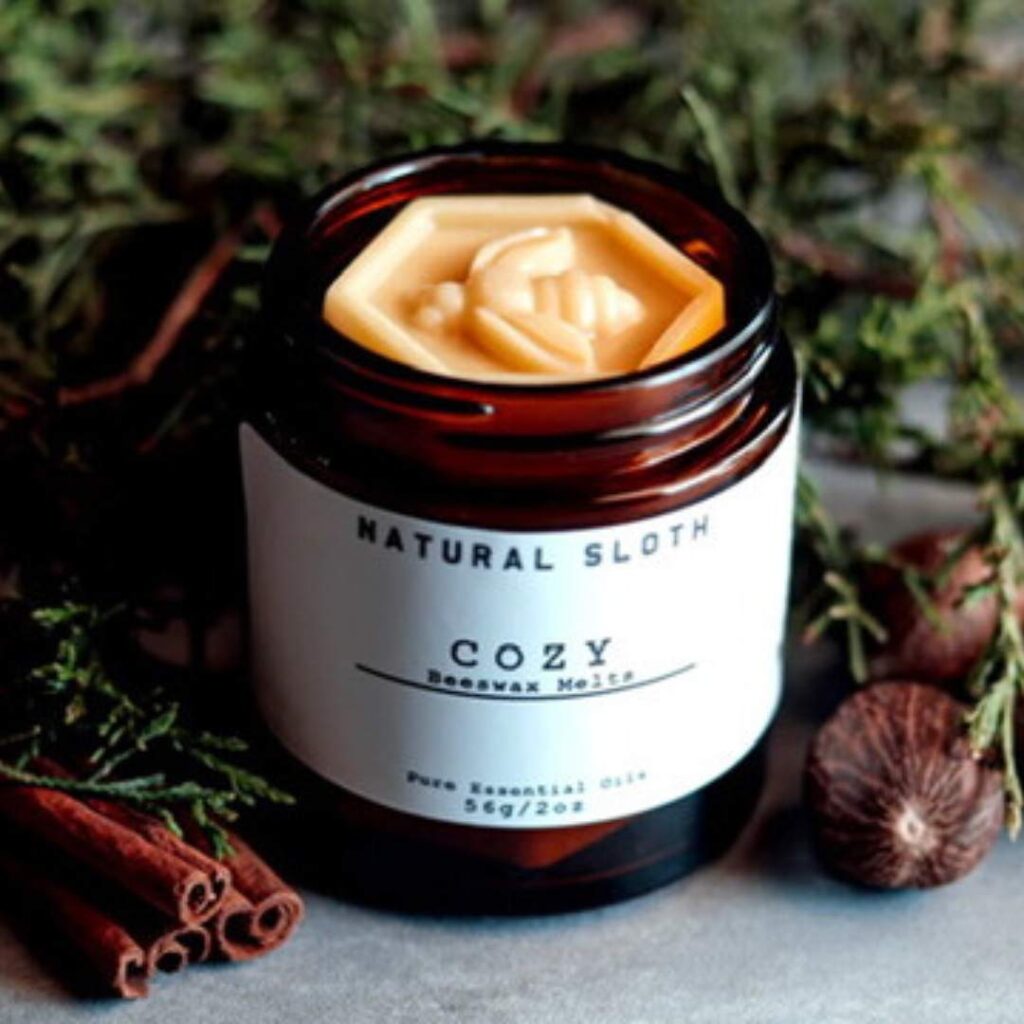
Natural Sloth’s mission is to provide products that create a healthy, toxin-free home using natural ingredients.
Their non-toxic wax melts are hand-poured and made with pure yellow beeswax, organic coconut oil, and pure essential oils.
They are Made Safe certified and made in the U.S.
3. Oakwood Natural Living Wax Melts
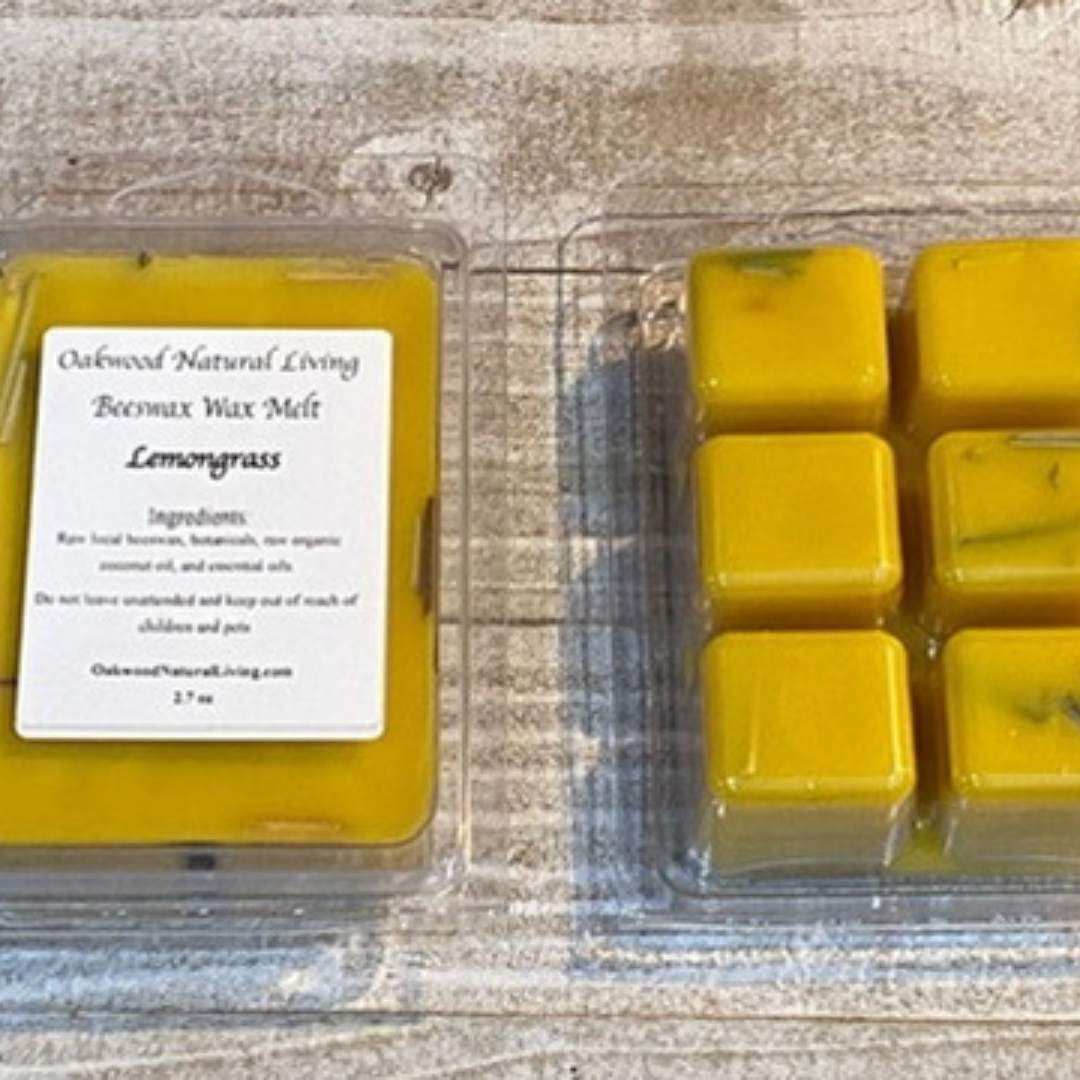
Oakwood Natural Living’s wax melts are made with beeswax from their own hives on their ten-acre farm. Their beeswax is non-toxic and allergen-free.
It is small-batch made, and they add only botanicals, raw ingredients, essential oils, and organic coconut oil.
4. Basic Bee Candle Co.

Basic Bee’s mission is to provide safe and healthy candles and wax melts.
Their safe, non-toxic wax melts are made with 100% unaltered yellow beeswax, organic coconut oil, and pure essential oils.
5. Aire Candle Co.
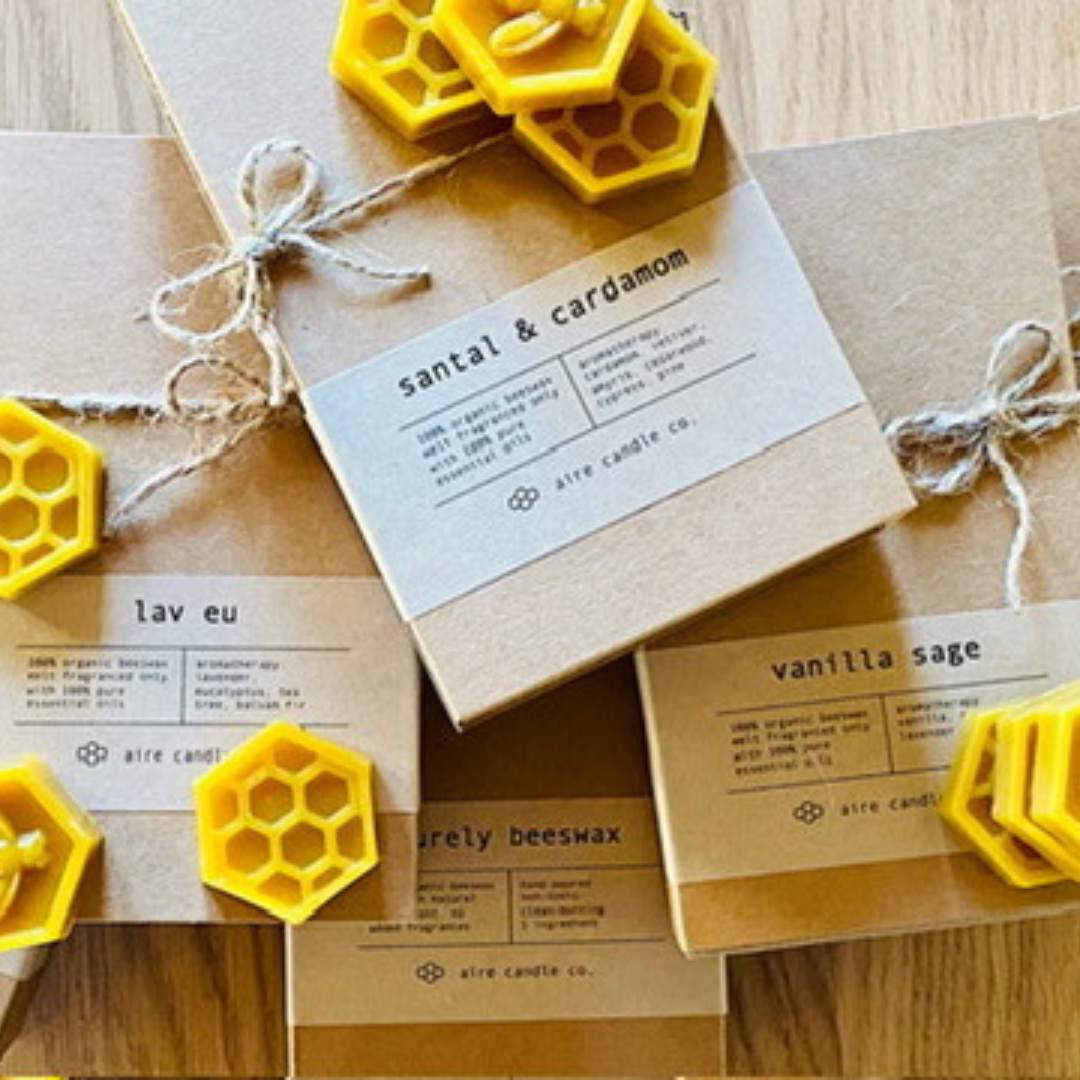
Aire Candle Co. is a Cape Cod, MA based business that specializes in creating all-natural, hypoallergenic 100% beeswax candles and melts.
Their wax melts are made with 100% pure beeswax and 100% pure sustainably sourced essential oils.
6. Hix Candle Co.

Hix Candle’s owner is a certified nutritionist who had had enough of commercial brand products with toxins, so she made her own.
Their non-toxic organic wax melts are made with 100% pure organic beeswax and 100% pure essential oils.
7. BeEsom
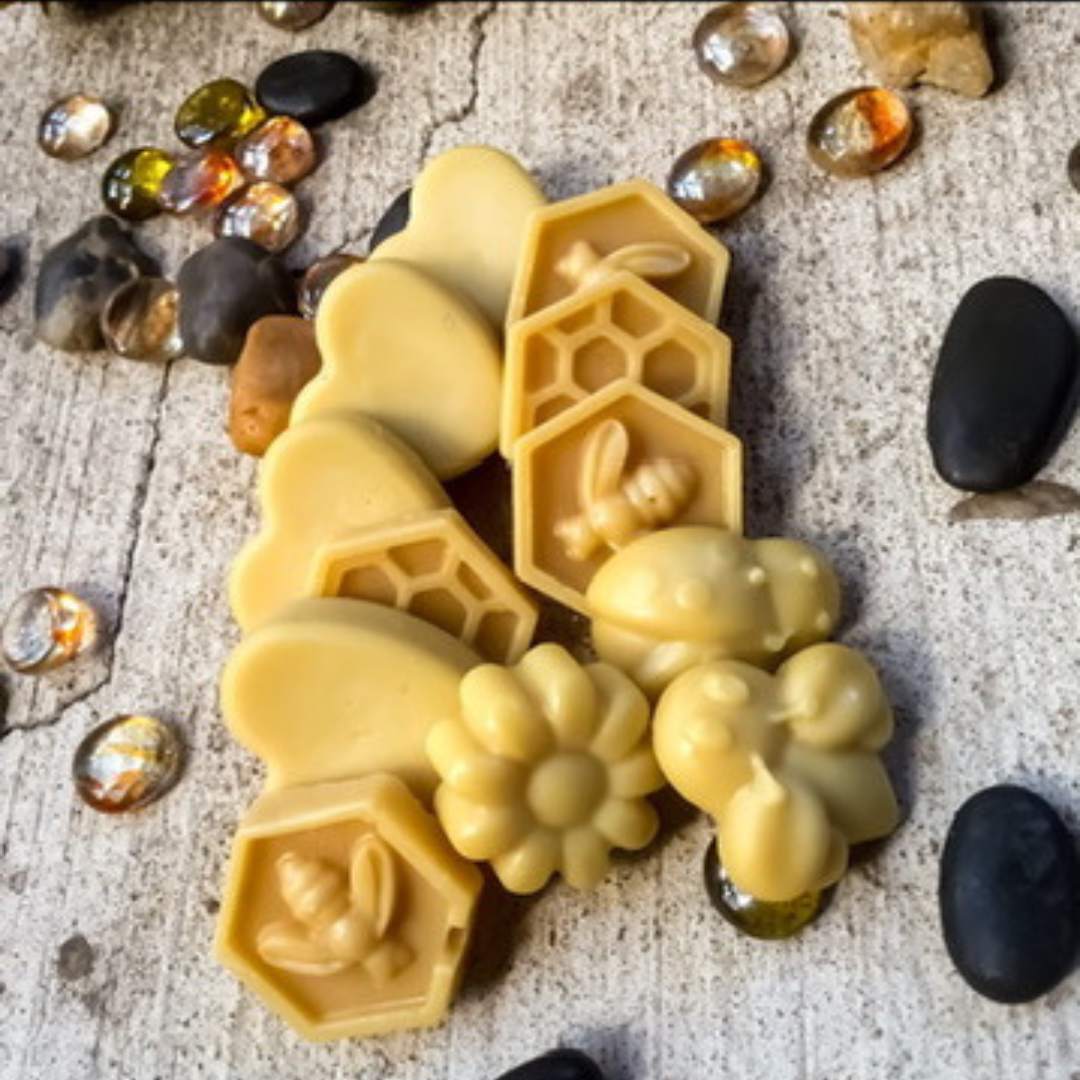
BeEsom believes in protecting the earth and supporting local economies. They use 100% pure beeswax from the North Georgia mountains.
Their eco-friendly wax melts are made with pure organic beeswax, organic virgin coconut oil, and essential oils.
What makes natural beeswax the best choice?
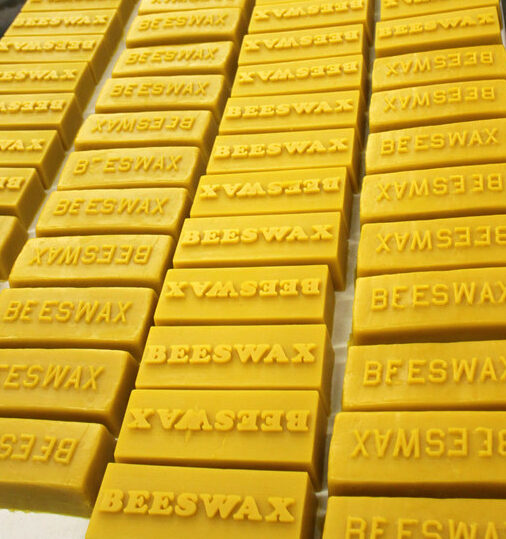
Beeswax is a natural, renewable substance produced by honey bees that burns cleanly and produces minimal soot and harmful chemicals.
Beeswax melts are less likely to produce toxic byproducts like benzene and toluene.
Beeswax candles typically burn longer than paraffin candles due to their denser and slower-burning properties.
Beeswax naturally has a subtle and pleasant honey-like scent. Though beeswax candles can be scented, they don’t require additional fragrances. A subtly scented candle is a good choice for people who react to strong scents.
Beeswax melts help purify the air. When burned, they produce negative ions, which can bind with toxin particles in the air, causing them to fall to the ground, reducing indoor air pollutants.
Beeswax natural wax melts produce less smoke than paraffin.
Beeswax candles can be a safer alternative for people with allergies, asthma, or chemical sensitivities, as they are less likely than paraffin to trigger reactions.
Finally, they are eco-friendly wax melts. Beeswax does not contribute to global warming like paraffin wax, a petroleum by-product.
Why are pure essential oils the best?
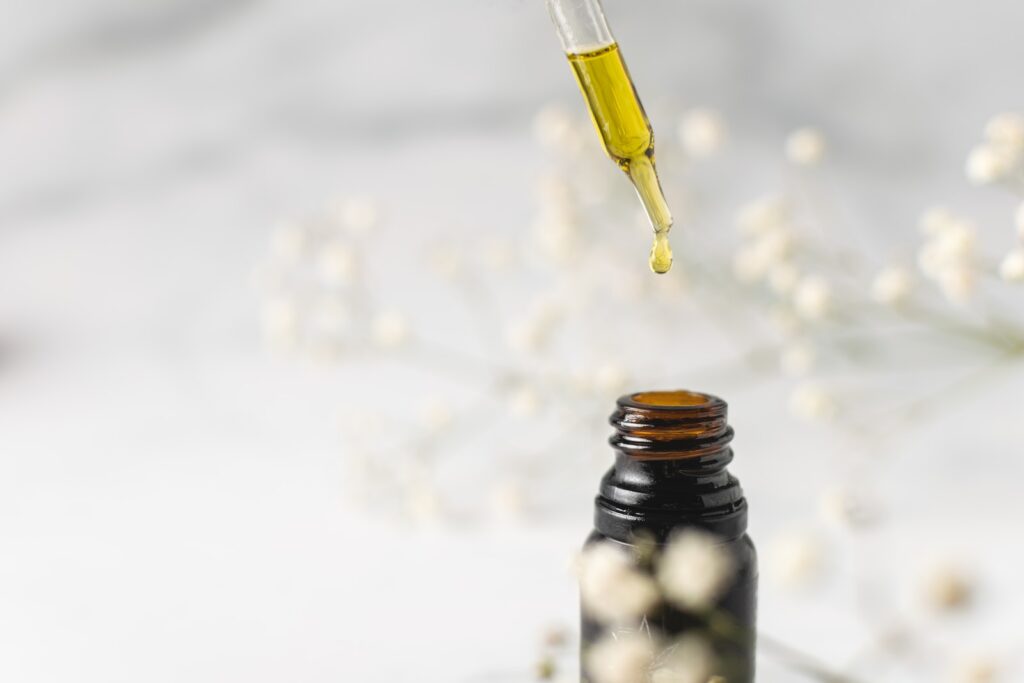
Natural essential oils are typically free from phthalates and other harmful substances associated with synthetic fragrances, artificial fragrances, and fragrance oils.
Essential oils are usually harvested through a meticulous distillation method, which isolates the essential oil from various parts of the plant, such as flowers, needles, twigs, fruit peels, seeds, or roots.
Why is beeswax often blended with coconut oil?
Beeswax is often combined with coconut oil in candles and wax melts to improve burn quality and fragrance dispersion.
This mix allows for a smoother and more even burn as the coconut oil softens the beeswax, which is naturally hard. This blending enhances the consistency for easier molding and shaping in candle and wax melt making.
Like beeswax, coconut oil is natural and eco-friendly, offering a cleaner burn with less soot than other alternatives.
What’s wrong with plain paraffin wax melts?
Paraffin wax is derived from petroleum, coal, or oil shale. Burning traditional candles and wax melts made with paraffin releases a variety of VOCs, many of which are harmful to human health. In addition, being a fossil fuel byproduct means producing paraffin wax, which uses finite resources, has a significant environmental impact, including greenhouse gas emissions.
What toxic chemicals are released when burning paraffin wax?
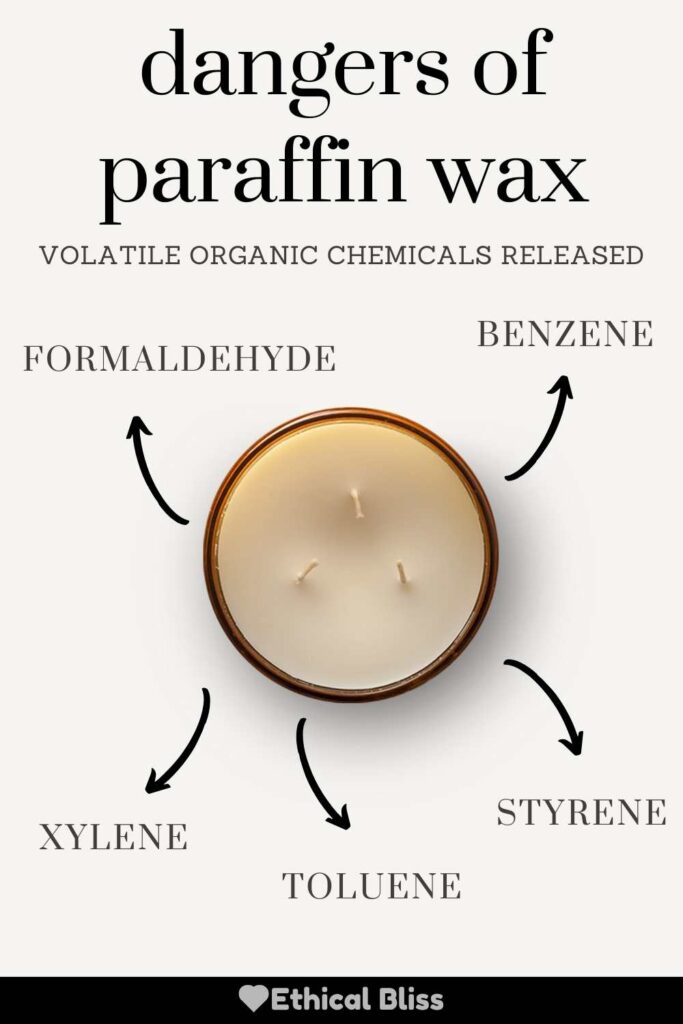
Burning paraffin wax may result in the release of a variety of toxic chemicals, including:
❌Volatile Organic Compounds: Voc’s are a large group of chemicals in everyday products that easily turn into gas or vapor (off-gas) from their solid or liquid form. Note that some VOCs are harmless. We’re concerned with the ones that are potentially harmful. The chemicals below are all VOCs commonly found in paraffin candle wax and the accompanying listed products. Reduce exposure to VOCs by checking labels and choosing lower-VOC options.
❌Phthalates: Used to make plastics more flexible and found in PVC products like vinyl flooring, shower curtains, and toys. It is also found in nail polish, soaps, shampoos, perfumes, hair sprays, plastic wrap, glues, and paints. Often hidden in wax under “fragrance.” Phthalates can cause skin irritation and increase the risk of asthma and allergies. They are also endocrine disruptors. Meaning they can negatively affect hormones and reduce fertility.3
❌Formaldehyde: Yes, the same stuff used in labs. It is found in certain cosmetics, hair products, wood products, fabrics, and glues. It’s a known carcinogen, which means it could potentially cause cancer.4
❌Benzene: Found in the sooty residue of synthetic fragrances, detergents, glues, paints, and cigarettes and the combustion of certain products, like paraffin wax. It can affect your respiratory health and has also been linked to cancer.5
❌Styrene: Common in producing plastics and foam cups, plates, and food containers. Also, in resins, certain types of rubber, fiberglass, and toys and are released in the combustion of certain products, like paraffin wax. It can affect your nervous system and has been tied to health issues like cancer and depression.6
❌Toluene: Commonly used in paint thinners, inks, nail products, and cleaners, this chemical can affect the central nervous system and cause headaches, dizziness, and even damage to the kidneys and liver with long-term exposure.7
❌Xylene: Found in paint thinners, varnish, rubber and leather products, aerosol spray, printing, and photocopying products. Prolonged inhalation of xylene can lead to symptoms such as headaches, dizziness, confusion, and, in extreme cases, respiratory and heart problems.8
What about soy wax melts?
Soy wax melts are better than paraffin melts. Like beeswax melts, they are produced from a natural biodegradable source.
However, many manufacturers of soy candles mix in paraffin wax, which helps hold the fragrance in the wax.
If you choose soy candles, confirm with the manufacturer that they are 100% natural soy wax with no other mixed waxes and that they are scented only with essential oils.
Are wax melt ingredients regulated?
The short answer is, “no.” While there are regulations on labeling regarding safety and fire hazards, the Federal Trade Commission (FTC) does not have specific regulations about the ingredients in melts or candles or how a company labels the ingredients.
The FTC focuses on preventing consumer deception and addressing specific labeling through the Fair Packaging and Labeling Act (FPLA).9
However, the FPLA gives manufacturers “Trade Secret” status for proprietary recipes, formulas, or processes. This “trade secret loophole” allows them to keep their formulas, including their fragrance ingredients, a secret from the public.10
As a result, many wax melt and candle manufacturers claim their ingredients are high-quality with phrases like “clean burning,” “natural fragrance,” and “phthalates-free fragrance.”
Therefore, the FTC’s regulations do not specifically address the disclosure of candle or wax melt ingredients, allowing companies to use general claims without providing transparent, detailed ingredient information.
What about fragrance oils?
It’s important to note that fragrance oils are NOT the same as essential oils.
Fragrance oils, often synthetic and composed of hundreds of ingredients, are used for their strong, consistent scents in products like perfumes and candles but typically lack therapeutic benefits.
In contrast, essential oils are single-compound, natural plant extracts valued for their therapeutic properties and subtler, natural aromas.
Additionally, fragrance oils are usually more affordable and widely available than essential oils, which can be more expensive due to their complex, natural extraction processes and the rarity of some source plants.
Artificial fragrances can pose health risks such as allergic reactions, skin irritation, and respiratory issues, particularly for those with sensitivities or conditions like asthma.
Some may contain harmful substances like phthalates linked to hormonal disruptions, and their use in products like melts, candles and air fresheners can impact indoor air quality by releasing volatile organic compounds (VOCs).
A National Academy of Sciences report states that 95% of the chemicals in synthetic fragrances come from petroleum, comprising benzene derivatives, aldehydes, toluene, and various substances known to cause cancer.11
So, how do I recognize safe wax melts?
Ingredient transparency is key. After looking at over one hundred manufacturers, I can tell you that the ones that use pure ingredients tell you right up front.
Review the full ingredient list posted by manufacturers. If information is not provided, pass or contact the manufacturer for clarification.
Look for 100% beeswax or 100% soy wax. Or 100% beeswax plus coconut oil. They should clearly state if they use pure essential oils instead of fragrance oils.
Watch out for mixes. If a product says “made with pure essential oils and fragrance oils,” there is no guarantee that the ones you buy will be made with pure essential oils.
Also, be wary of “essential oil infused” or “infused with essential oils.” Generally, these terms do not mean pure essential oils.
Finally, “natural fragrances,” which sounds pure, actually means nothing without the disclosure of true ingredients.
Can I make my own non-toxic wax melts?
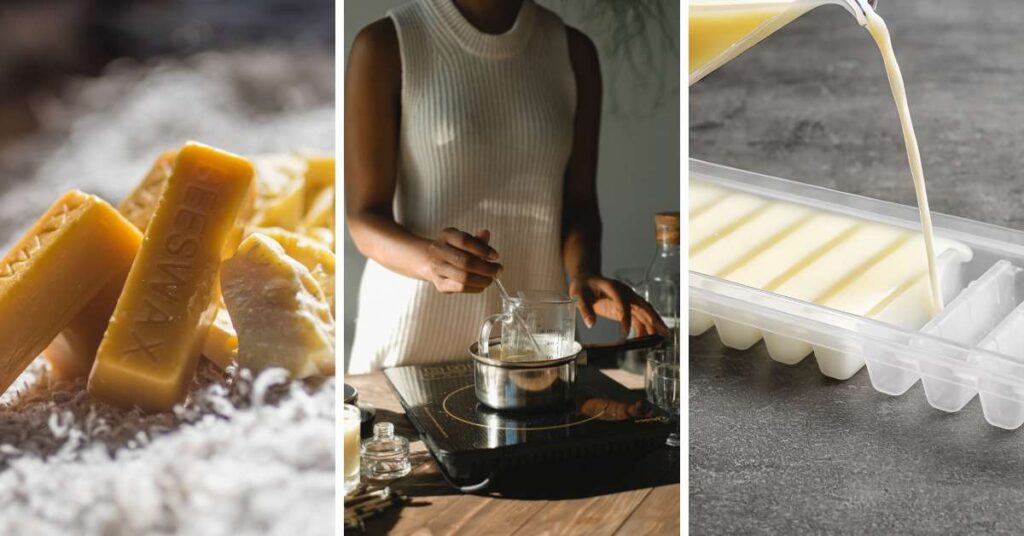
Yes!
Create your own blend using beeswax, organic coconut oil, and essential oils:
- Blend together 1 cup of melted wax (see below) with 1/2 cup of organic coconut oil. Stir in 100 drops of your favorite essential oil for fragrance.
- Carefully pour the mixture into molds, ice cube trays, or mini muffin tins for shaping.
- For small batches, use 2 oz of beeswax, 1 oz of organic coconut oil, and 25 drops of essential oil.
- Adjust the amount of essential oils for your preferred scent intensity.
Melt beeswax safely in a double boiler, not directly over a flame, to control heat. Use a large pot with water and a smaller pot on top. Put the beeswax in the smaller pot for indirect, controlled melting. Use low heat and do not leave it unattended. This method is the safest and most efficient for beeswax.
Beeswax is messy, sticks to everything, and is hard to remove. It’s best to use dedicated equipment for this process.
This DIY recipe allows you to create customized, naturally scented safe wax melt cubes or rounds without harmful ingredients.
Where can I buy pure beeswax to make my own?
There are many reputable sellers of wax. Ideally, look for pure, 100% beeswax from local beekeepers. Online, check Etsy for a variety of small businesses selling pure beeswax.12
Where can I buy pure essential oil?
For reputable essential oil companies, check out our article on the Best Non Toxic DIY Room Spray With Essential Oils.
Where can I buy a wax warmer?
Wax warmers are available at all major retailers, including Amazon and Target. Here are a few things to remember when buying beeswax warmers:
- Electric warmers are safer and more consistent in temperature control than open-flame tea light warmers.
- Beeswax melts at a higher temperature than paraffin or soy, so choose a warmer that can maintain a high temperature without overheating.
- Wax melters made of ceramic or glass are the best choice as they distribute heat evenly and maintain temperature well.
- Larger dishes allowing for more wax will provide a stronger scent.
- Automatic shut-off and temperature control are important for safety, especially if you plan to use the warmer for extended periods.
Final thoughts on non-toxic wax melts

Eco-friendly beeswax wax melts are a top choice if you love the fragrance of burning wax and want to reduce your exposure to toxins. They’re not easy to find but my list will give you a good place to start. Additionally, for those who enjoy a hands-on approach, making your own non toxic eco-friendly wax melts at home is a simple and satisfying way to personalize your fragrances while ensuring they are completely free from harmful chemicals.
Do you have a favorite brand of non-toxic wax melts? We love to hear feedback from our readers so let us know in the comments!
Related posts:
Best Non-Toxic DIY Room Spray With Essential Oils
10 Best Non-Toxic Wall Plug-Ins + Alternative Air Fresheners
Honey: Raw, Unfiltered, Organic or Pure for Best Health
Rosemary Oil: Your Secret Weapon for Tackling Hair Loss
Sources:
- Made Safe ↩︎
- Fontana Ingredients ↩︎
- Zero Breast Cancer ↩︎
- The International Agency for Research on Cancer ↩︎
- American Cancer Institute ↩︎
- Environmental Protection Agency ↩︎
- Occupational Safety and Health Administration ↩︎
- Centers for Disease Control & Prevention ↩︎
- Fair Packaging and Labeling Act ↩︎
- Trade Secret Exception ↩︎
- Science Direct ↩︎
- Beeswax Etsy Sellers: Waxmelters and Gardnerbees ↩︎


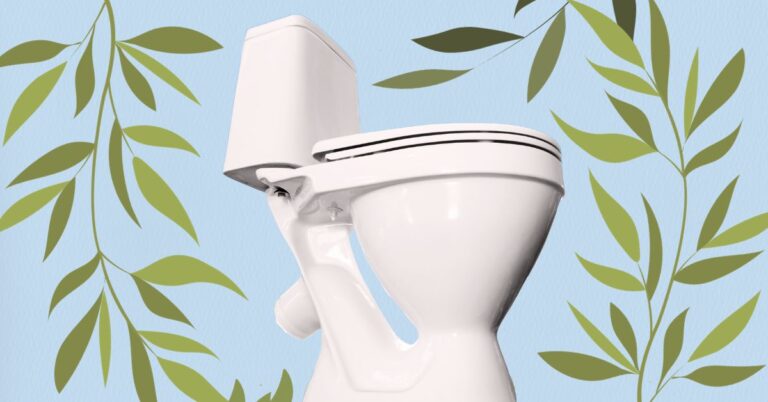
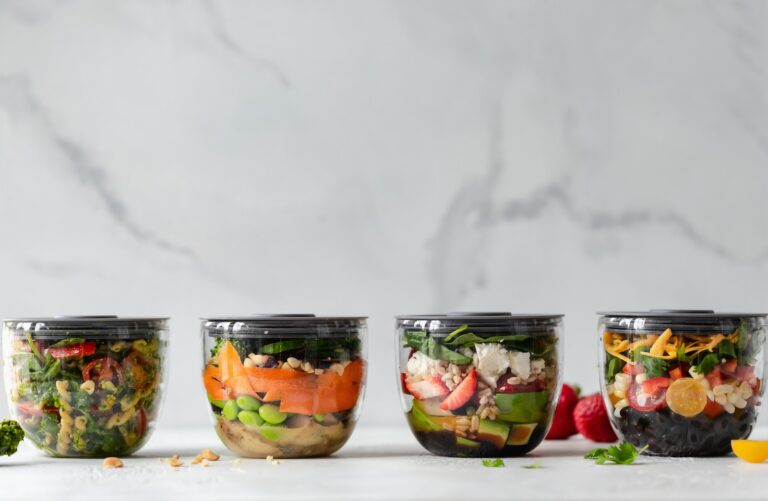
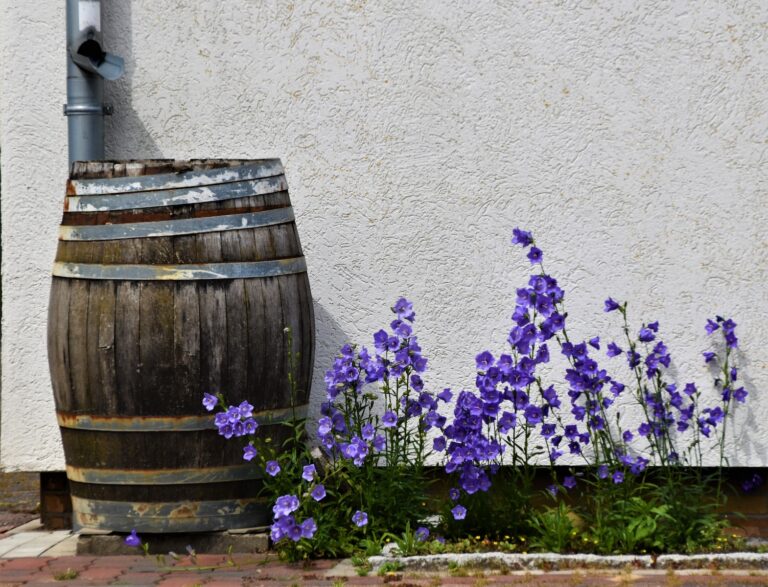

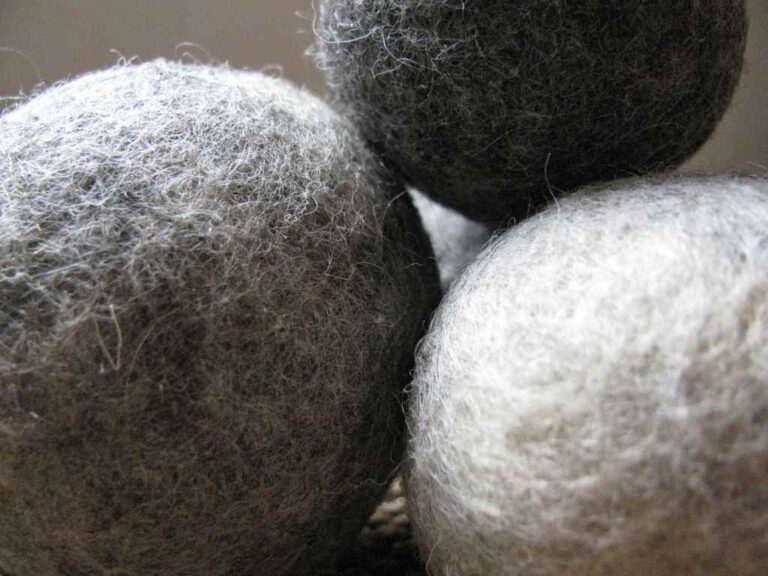

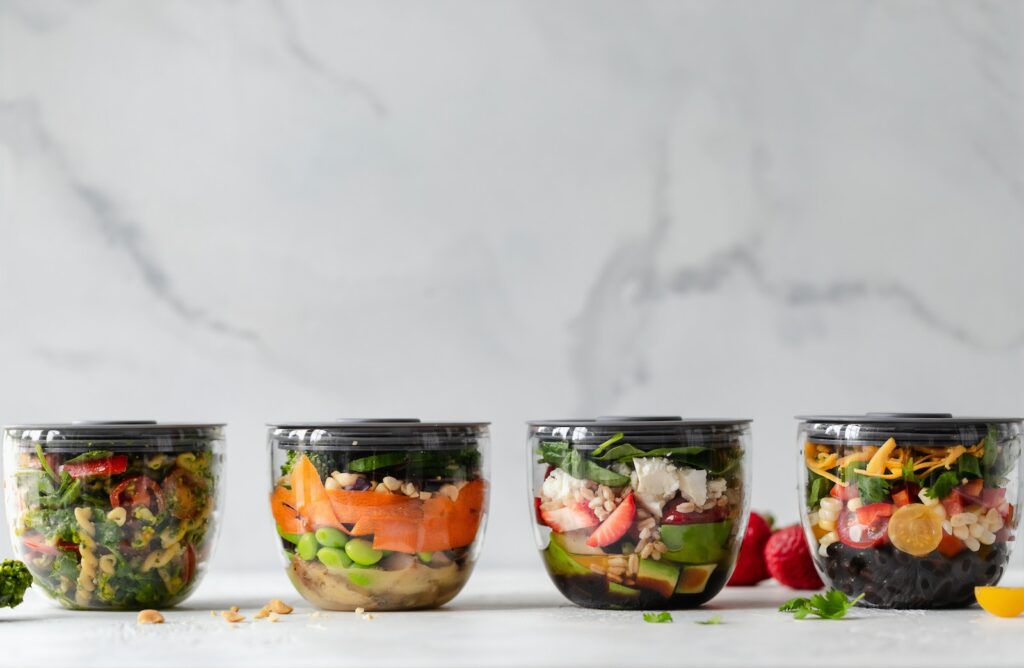


I noticed that The bath and Wick Shop was not on this list. Though she uses fragrance oils, her oil are non toxic, and she only buys the best as to make sure the FO she is using are not harmful to burn. Some essential oils are. I am familiar with all of these companies, so it’s strange she isn’t on the list. Her candles are amazing and 100% safe, even with the fragrance oils.
I know it’s a big disquinghment, but as I said, she. Are sure the oils she uses have no prop 65 warnings, no Phthalates, vocs, and they are infused with essentials oils, just my opinion, but The Bath and Wick shop should have been featured here.
Thanks for taking the time to read this!
Amanda, Thank you for your recommendation about The Bath and Wick Shop and for highlighting their commitment to non-toxic, high-quality products. Our current article focuses on wax melts using only essential oils. While we appreciate learning about alternatives, this piece has a particular emphasis. However, your input is invaluable, and it opens up considerations for future content that explores a wider range of non-toxic home fragrances. Thanks again for your insight and for contributing to the discussion on non-toxic living!